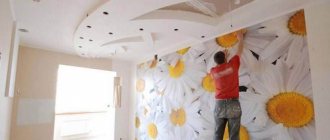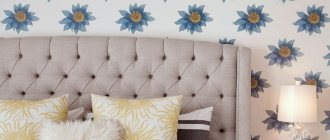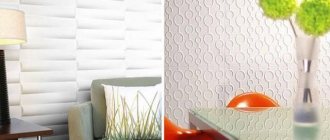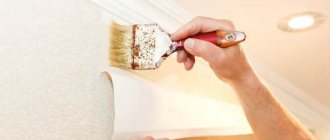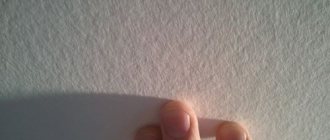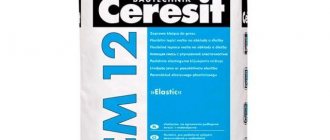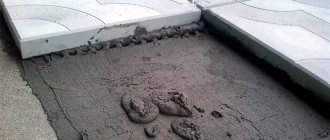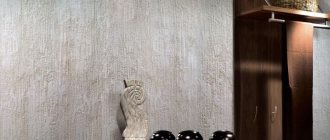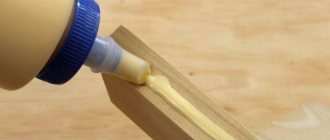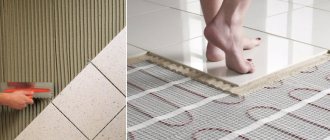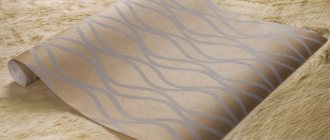Fiberglass wallpaper is a strong and reliable decorative coating that can be used to decorate surfaces in any room. Due to their features, they can be used even in the kitchen and bathroom (despite high humidity and temperature), and also serve as a base for painting. Many people are interested in what glue to choose for glass wallpaper for high-quality and reliable adhesion of the material to the surface.
Usually this is glue for languid wallpaper, which we will talk about later in the article.
Every wallpaper manufacturer is interested in ensuring that its products are considered high quality and enjoy popularity.
That’s why the wallpaper usually comes with an adhesive mixture in dusty form, which you just need to dilute with water and you can start covering the room.
Unfortunately, it often happens that careless traders open the wallpaper packages and sell the glue separately, in which case you will have to choose the appropriate glue for the glass wallpaper on your own.
First, the wallpaper glue should be quite thick and viscous - ordinary compounds created for cardboard wallpaper are not suitable.
Due to the fact that textured wallpaper is heavier than ordinary paper sheets, you will need a special glue for heavy wallpaper, which will firmly hold the canvas not only on the walls, but also on the ceiling.
What is glass wallpaper
Fiberglass material is a fused compound:
- quartz sand;
- dolomite;
- limestone.
Under the influence of high temperatures (about +1200 °C), a liquid hot mixture is formed. Yarn is then made from it (thin and very light threads). The same threads are used to make fiberglass (webs), which are used in construction as a fastening material. The threads are pressed onto wet paper, and the finished material can be used to reinforce cracks on surfaces.
Fiberglass wallpaper is a finishing material for painting and can be used for walls and ceilings. The relief is obtained by interlacing threads of different thicknesses. If gluing is done correctly, the surface can be painted about 15-20 times. Wallpaper is sold in rolls with a width of 1 m. Their length is 12.5 m, but can be up to 50 m. The price of wallpaper for painting depends on their quantity, the complexity of the pattern, and the manufacturer.
Advantages and disadvantages
- Natural, environmentally friendly raw materials;
- fire resistance;
- reinforcing properties of the coating (strengthening walls, hiding irregularities and small cracks);
- strength, durability of the result (about 10-30 years);
- ease of changing the interior by repainting;
- the result protects surfaces from possible fungal infections;
- no static charge (does not attract dust);
- hides small flaws on walls and ceilings (irregularities).
The drawings remain almost invisible. After painting, the surface becomes rough. Depending on the position of the threads, the finishing relief can be in the form of matting, herringbone, diamonds or checkerboard. The size of the drawing is large, medium, small. There are other weave options. They are considered copyrighted and are more expensive. Fiberglass wallpapers are not afraid of moisture, which means they can be glued in the bathroom and kitchen.
Flaws:
- limited choice of designs (compared to ordinary paper wallpaper);
- When gluing wallpaper, wear protective clothing, since the fibers can break.
The cost of glass wallpaper is higher, but durability and beauty outweigh these disadvantages.
What is special about glass wallpaper?
Fiberglass is a popular modern finishing material. It is highly durable, environmentally friendly, hypoallergenic and beautiful in appearance. Fiberglass is a fireproof material that does not support combustion. It is resistant to mechanical damage. Such wallpaper is often glued before painting. The highest quality samples can be repainted up to 20 times. Fiberglass is firmly attached to the wall, ensuring a durable repair. But such wallpaper will have to be removed with a layer of plaster.
Working with glass wallpaper has several nuances. Thus, glue cannot be used for regular paper finishing. Fiberglass simply won't stick to it. Wallpaper will not adhere to homemade paste either. Another important detail is that when cutting fiberglass, you need to protect your face with a mask and your body with special clothing. The fact is that the material is created from recycled quartz sand. Its particles can damage the skin and mucous membranes. Otherwise, the installation of glass wallpaper is no different from ordinary ones.
How to choose the right one
Wallpaper is selected based on density and the thickness of the rolls themselves. It should be remembered that manufacturers can use more impregnation for this. It compacts the roll itself, but does not provide any texture, and the design turns out inexpressive. If the manufacturer uses loose threads for textured patterns, then after squeezing out the air with a spatula, the pattern becomes flat.
To avoid getting into an unpleasant situation, you can choose glass wallpaper in the following ways.
- Take a small piece of canvas and stick it on the wall. Then you need to paint the surface and treat it with a spatula. If the material on the wall is not flattened, it means the product is of high quality and you can work with it.
- If you can’t experiment, choose well-known brands. Companies value their reputation, which means the gluing result should be strong, textured, and durable.
Manufacturers
Among manufacturers, it is better to trust world-famous names. This applies to the Swedish company Johns Manville and its Oscar, Welton, Tassoglas series. Glass wallpaper from the Vitrulan series from the German manufacturer Vitrulan Textilglas GmbH is in demand. Such wallpaper can withstand serious mechanical loads, even if the surface itself is wet.
The quality of the roll can be checked by touch, but after gluing it to the wall it may not be as dense. This is due not only to loose threads, which makes the result flat, but also to the addition of starch to the composition. The latter option gets wet upon contact with liquid glue, and the wallpaper itself becomes loose.
The density of good wallpaper should be at least 145 g/m2. m. If the indicator is not in the characteristics, take rolls with a large weight. According to the marking, choose first-grade glass wallpaper. There may be black stripes on the roll. This indicates a defect, for example, places with crooked or fallen threads. Then another 50 cm of canvas is added to the standard length.
Characteristic
The fiberglass material is a kind of web, fiberglass threads that are connected in an indefinite order. This structure allows you to create an ideal surface that will combine both visual and internal characteristics, that is, the characteristics of strength and density.
There is a special glue for fiberglass. The composition of such glue usually includes: modified starch, vinyl acetate polymer, a plasticizer that increases the elasticity of the fabric, as well as other bactericidal additives. The glue is produced in special packaging - in plastic boxes, which are secured with a tight lid.
Glue for fiberglass
Advantages of Oscar glue
There are a number of positive characteristics that Oscar glue for fiberglass has:
- no harm to the human body;
- economical - for 10 liters of water you need only 0.5 kg of dry powder;
- ease and speed of preparing the solution: the existing powder is poured into a container with cold water and is ready for use after 8-10 minutes;
- saving on product consumption: only 0.25 kg of ready-made glue mixture is enough for 1 sq.m of coating;
- a fairly long shelf life of the prepared mixture: it can be stored for up to 2 months, but only in closed packaging;
- You can easily move the glue in a closed container.
Before you begin the process of gluing the material onto the finished surface, you need to carry out the main stages of preparatory work. Is it possible to glue fiberglass without preparation? Of course not, otherwise he won’t stick around. The surface should be cleaned of all dirt and dust, and cracks that are visible to the naked eye should be treated initially. Working with glue makes the task much easier than gluing wallpaper to the wall, because the glue is applied only to the surface itself, as shown in the video.
Features of Wellton glue
Glue for fiberglass canvas Gossamer is created specifically for working with fiberglass canvases. It is able to firmly fix the canvas on any base, even if it is not perfectly smooth. The advanced features of this glue provide such characteristics as:
- high solubility of the product;
- obtaining a uniform and homogeneous mixture;
- effective adhesive ability;
- saving money;
- safety and preliminary protection of the development of bacteria or fungi during operation.
Types of adhesives
Regular or universal glue is not suitable, since the material itself is heavy and dense, and therefore requires strong adhesion. Otherwise, the surface will become covered with bubbles and fall off the walls (ceilings).
The packages must be labeled “for fiberglass wallpaper.” The cost of glue is high, but damaged rolls and mood will cost even more. It is better to glue the glass wallpaper with a product from the same manufacturer. If the composition contains starch, then buy another product. PVA must be specified.
Glue is commercially available in ready-made form (liquid composition) and powder form (dry mixture).
- The finished glue can be used immediately after opening the container.
- The dry mixture is diluted with water in the proportions specified in the instructions for use.
Ready-made adhesives
Ready-made mixtures for fiberglass wallpaper should be used as quickly as possible after opening the container. Otherwise, the glue will begin to deteriorate and lose its properties.
To avoid buying too large a container, consider the required amount of the finished mixture. You need to know the amount of work (surface area to be pasted) and the glue consumption, which must be indicated on the container. This way you can easily determine the required amount of mixture.
Pay attention to the expiration date when purchasing the composition. If it is nearing its end, adhesion may not be at its highest level. This kind of glue should be abandoned.
Per sq. m. approximately 200-300 g of composition is consumed. It is usually packaged in containers of 5-10 liters, but sometimes larger containers are produced.
Most of the finished adhesives are made on the basis of PVA. Acrylic adhesives are popular. They are harmless, odorless, and can be used as wallpaper in children's rooms. Hardening occurs after the evaporation of water from the already applied mixture. The consumption per 1 m2 is small, the application is thin-layer, but the adhesion to the surface and wallpaper is strong. The composition contains antifungal additives.
Dry mixes
If the adhesive for glass wallpaper is chosen in a powdery consistency, then it must be diluted according to the instructions:
- measure the required amount of water in a separate container (usually 600 ml, more precise numbers are indicated on the packaging);
- Use a wooden spatula to form a funnel in the water and gradually begin to sprinkle the glue itself (in a thin stream);
- After mixing, the solution should be left for 6-8 minutes to swell.
You should get a mixture with the consistency of hard jelly. If the glue is too thick, you can add a little water. Do not make the composition too liquid. The wallpaper may simply not work.
The price of powder adhesives is less, but this is offset by the need to dilute them yourself. Dried fiberglass sheets cannot be painted with water-based paints. Otherwise, the entire coating may become distorted and lose its original appearance. The powder contains special additives to give the dried mixture elasticity, increase adhesion and prevent mold.
Both dry and liquid ready-made formulations are of high quality. But when preparing for such a repair for the first time, purchase ready-made adhesive mixtures.
There are offers on the market, for example, glass wallpaper from the Virtual Aqua Plus brand. They already have an adhesive composition applied. Before gluing, the surface just needs to be moistened with clean water.
Advantages and disadvantages
Oscar products manufactured under the brand have a number of comparative advantages, which explains their wide distribution. The main positive characteristics include the following:
- After drying, the solution leaves no streaks or stains, forming a transparent film with an elastic structure.
- The composition is economical, and the consumption rate does not exceed 1 liter per 4.5-5 square meters.
- Thanks to its versatility, Oscar glue can be used for gluing wallpaper in residential premises and in any public establishments without restrictions.
- A high degree of adhesion ensures strong adhesion to the surface without the risk of glass fiber moving from its original position.
- The substance is resistant to the formation of fungus and mold, does not contain toxic components and is absolutely safe for humans and the environment.
- Thanks to the long storage period, the composition does not lose its characteristics for 3 years. It is also allowed to store the glue at temperatures down to -40 degrees for a month or perform no more than 5 freeze-thaw cycles.
See also
Description and properties of polymer glue, types and instructions for application
How to properly glue glass wallpaper
The result of gluing depends on the quality of the material and the correctness of the work.
Surface preparation
You can stick glass wallpaper onto drywall, tiles, concrete or wood. Proper preparation of walls increases the life of wallpaper. For work, you may need metal spatulas, a roller, plaster, putty, or primer mixture. Putty is used to treat uneven areas and cracks, and primer increases adhesion. Using a spatula you can remove the remnants of old wallpaper and glue. The finished surface must be smooth, clean and dry.
Gluing technology
For the first time, take ready-made adhesive mixtures, not in the form of powders.
Leave the ceiling gluing to the professionals. The beauty of the finish and the strength of adhesion depend on this. You can glue glass wallpaper to the walls yourself. In this case, you must carefully follow all steps.
The technology is not much different from ordinary paper or vinyl wallpaper.
Avoid drafts. All windows and doors must be closed. It is necessary to ensure room temperature in the room (at least +18 °C, not higher than +25 °C).
A durable, reliable result is possible if the surfaces are protected from direct sunlight.
The glass wallpaper must be glued with the outer side of the roll, since the front side of the canvas is on the inside.
Manufacturers always leave a blue or gray stripe on the reverse side. You will have to prepare protective clothing, since fiberglass particles can irritate the skin. Clothing must have long sleeves and fit close to the body. Need gloves.
The wallpaper itself is first cut into strips, leaving a small allowance for matching the pattern. The strips must be laid end to end. There should be no cracks or gaps between the edges. The adhesive mixture is applied only to the walls and carefully cover the surfaces in the corners. There is no need to apply glue to the canvas. For better adhesion, apply the composition with a roller. After gluing, go over the strip with a roller or spatula. This will remove air and excess glue. To clean the edges of the strips, use a clean, dry rag or sponge. Similar requirements are met for gluing to the ceiling.
Each new canvas must be measured separately, especially if the height in the room is different.
You need to add about 10 cm more allowance to the measured length in order to properly fit the pattern and prevent any shortage of fabric at the top or bottom. It is better to cut the canvas with scissors. A knife may crumble particles. The reverse side has a flat surface, it is marked with a gray/blue line. The first stripe should start from the window or door. The glue itself on the wall should be applied evenly without gaps. Pre-drawn vertical guidelines will be helpful.
Use a plastic spatula to level the sheets. Excess can be removed with a sharp stationery knife. If there are switches and sockets on the site, turn off the power supply at the panel. Only after this can you remove the external parts, and cut an opening in the place of sockets and switches. Press the glued part to the wall with a spatula.
After renovating the room, do a wet cleaning. Spraying water with a spray bottle will help the fiberglass particles settle.
Bubbles found after drying can be removed by injecting a little glue inside from a syringe and then smoothing the area tightly. It is better to treat the loose joints with a glue stick and then press them with a roller.
Painting process
Painting of canvases can only be done after they have dried. As a rule, 1-2 days after gluing. On average, paint consumption is about 500 g per square meter of canvas. The paint is applied in two mandatory layers. The second coating can be carried out no earlier than 12-20 hours after the previous one.
Glass wallpaper without a pronounced color is best suited for painting. If the paint layer is too thick, the surface will lose its relief and attractiveness.
Paints must have the appropriate inscription on the packaging. You can use water-based or water-dispersion types of paints. For better adhesion, pre-treat the surface with a primer. To highlight the relief of the walls, choose special silky matte types of paints.
Preparation rules
The instructions for Kleo adhesive for non-woven wallpaper recommend preliminary surface preparation. In this case, at each stage it is necessary to use a special product from the same manufacturer. However, consumer reviews indicate that this is an optional condition. For high-quality wallpaper gluing, the usual wall preparation is sufficient:
- removing old coatings;
- puttying cracks;
- applying deep penetration primer.
For these works you can use any suitable means.
Preparation of the adhesive mixture
The most common packaging of French glue is a cardboard package containing 250 grams of dry mixture. On the pack of Cleo glue all the steps are described in great detail, including the process of preparing the mixture. So, you need to act in the following sequence:
- Pour 7 liters of cold water into a container (at room temperature);
- open the package and pour the mixture into the water near the side of the container;
- Stir the water all the time with a long stick or hand;
- leave the mixture for 5 minutes;
- Mix the glue thoroughly again.
Reviews from those who have already used this brand of wallpaper glue say that the mixture is easily mixed without the use of a mixer or drill. But to facilitate the process, it is quite acceptable to use electrical appliances.
The finished glue should be a slightly cloudy white color - opaque. Once dry, Kleo becomes completely invisible, no need to worry about that.
The pack indicates that its volume should be enough for 35 m² of surface.
Advice! Experienced craftsmen never dilute wallpaper glue as written in the instructions.
They recommend taking into account the weight of the canvases and the roughness of the walls - the thicker the glue, the more reliably it will fix the wallpaper and fill the pores in the walls
It is important not to overdo it - too thick a mixture is difficult to push out from under the wallpaper
According to the instructions, the finished glue can be stored for 10 days. This is a big plus of glue, since DIY repairs are rarely done in one day.
